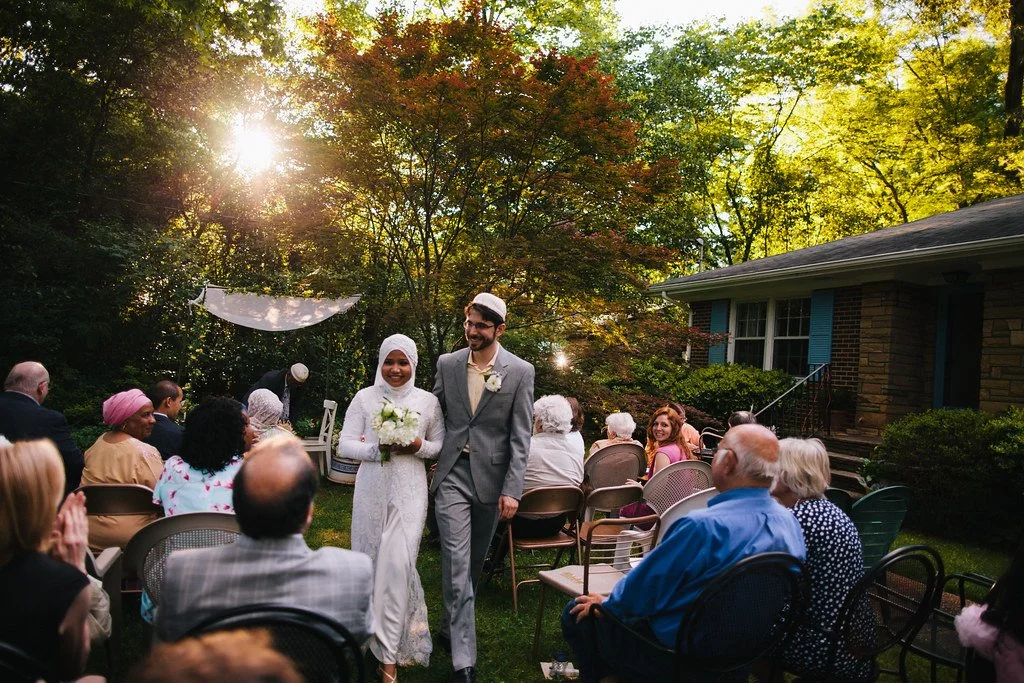Americans are switching denominations and religions at a significant rate, and leaving behind formal affiliation to become “spiritual but not religious,” according to Pew Research. That is the reality of our current flexible and fluid religious landscape, in a country with freedom of religious affiliation. If you want your children to have a particular religious identity, your best strategy is to raise them with that singular identity. So if both parents agree that they want to raise the child in that religion, fine, go for it. But if you have two religions represented in the family, or one religion and one secular worldview, my point is that you cannot simply ignore the second worldview. This child grows up knowing and loving people with two different sets of practices, two belief systems. I believe that this gives them a certain proclivity for universalism, bridge-building, and peacemaking, which I see as an advantage in life, and good for the world. Our complex world is now interconnected by media and internet, shrinking rapidly in terms of our ability to interact in real time. Children who span the traditional cultural, ethnic, racial and religious boundaries have a head start in becoming the cultural translators and diplomats who can help us to make this complex world a peaceful one.
What’s been the reception of the book?
This has been a year filled with exhilarating conversations. I have spoken to rooms packed with parents, with college students, with interfaith dialogue groups, and to a room filled with almost 50 rabbis. I’m in dialogue with ministers and priests, Muslims and Hindus. I would love to visit every seminary in America, because clergy need to be prepared for pastoral counseling of the growing segment of interfaith families. And college chaplains, in particular, are looking for tools to help support students with complex religious identities, or in complex religious relationships. I can help provide those tools. Most of all, I am heartened by the fact that Jewish communities are beginning to reconsider the strategy of ignoring the 25% of intermarried Jewish parents raising children “partly Jewish and partly something else.” These are not families rejecting Judaism: they are families who want to stay connected. For instance, this year the venerable Jewish Daily Forward invited me to be on a roster of experts for their new interfaith families advice column, alongside more conservative viewpoints.
How can someone who is not involved in an interfaith relationship better interact with interfaith communities and create an environment that does not marginalize them?
I would say, try to see that human beings, all of us, have complex religious identities. None of us fit easily into single-label boxes. Even if you strongly identify as, say, Presbyterian, you may or may not agree on various religious beliefs or practices with your neighbor in the pew. Each of us constructs our own religious and spiritual (or humanist) identities out of our family backgrounds, our encounters with the natural world, with literature and religious texts, with other people. People from interfaith families are no different in this regard. We simple start out with a broader range of family influences.
What is the first step for families who are interfaith who want to be more pro-active?
A couple getting married starts from a shared platform of love and respect, and ideally they have had deep conversations and have a shared position on the religious and spiritual life of their family going forward. Unfortunately, often it is the extended family, who may have less intimate experience with people from other religions, who put on pressure about the wedding, about the education and identity of future children, etc. Everyone in this situation needs to work hard to continue to encounter each other out of a place of love, rather than fear and defensiveness. Ideally, rather than a retreat to avoiding each other, spend time with extended family, sharing holiday celebrations and religious rituals without pressuring anyone to convert or to choose a particular pathway for the children.
What are the greatest promises, and challenges, facing interfaith families at the present moment?
As interfaith families, we represent the extraordinary religious freedom and ability to bridge social boundaries in America today. This is both a promise and a challenge. My own experience, as part of a happy three-generation family, is tremendously positive. The challenge is mainly in explaining my happiness to people, mainly baby boomers and older people, who tell me “you can’t do that.” I find that young people, Millennials and in particular the newer “Generation Z,” often come from complex family backgrounds, and have a more intuitive understanding of religious complexity.
Some may counter, “isn’t saying someone is “interfaith” like starting a new religion all its own valuing pluralism and tolerance, worshipping some polytheistic amalgamation of gods? Isn’t saying something is ‘both’ just some trumped up form of ‘buffet style religion?’” Respond.
Interfaith is not a religion: there is no specific interfaith theology, or required set of practices. Interfaith is a state of being that results from marriage into, or birth into, an extended interfaith family. The communities that have grown up to support interfaith families provide a way to stay connected to both religions, to teach children the history and texts of both, and to allow them the opportunity to experience religious rituals, when they may or may not be welcomed or feel comfortable in more traditional houses of worship. These communities also provide a place where families can experience their interfaith status as positive, rather than feeling marginalized.
Your book focuses predominately on Jewish-Christian interfaith families. You say you look forward to the books to be written from other interfaith combinations, but you wrote, “each religious recombination creates unique challenges and unique synergies.” Talk a little more about that.
I did interview interfaith couples including Muslim, Hindu and Buddhist practices, so in that chapter of my book you get a glimpse of some of the ways these interfaith families work. What stays the same is the essential role of respect, educating each other and sharing in ritual together, and working to maintain positive relationships with extended family. I can recommend three books that have been published already. The Book of Mormon Girl by Joanna Brooks on a Mormon and Jewish family, Saffron Cross by J. Dana Trent on a Hindu and Christian family, and a new book, In Faith and In Doubt by Dale McGowan, on Christian and secular humanist families.
What’s the next step in the field of researching interfaith families and interfaith communities?
My book was the first to survey and interview interfaith children raised with intentional interfaith educations. I think the results are tantalizing, and largely reassuring in terms of refuting the idea that interfaith children raised with “both” will be confused. But I am really hoping that academics now follow up with larger and longer studies on the spiritual and religious journeys of these children.
For many readers, this is their first experience with the concept of an interfaith community. Break down an interfaith community’s core vision, purpose in three points:
An interfaith families community:






